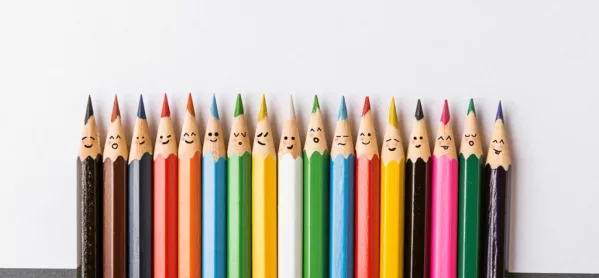Diversity, equality and equity have become big topics over the past 12 months.
A big part of this discussion has included how we must educate young children to grow up with more awareness of others and embrace our differences, not reject them.
This is why I have made focusing on issues such as diversity, gender, disability and culture a big part of my classroom focus.
Teaching about diversity and equality in EYFS
For EYFS learners, this might sound like tough topics to broach - but with some creativity and lateral thinking, these are some ideas that have worked well so far.
1. Discussing accents
Children often notice differences in one another quite innocently - but it’s a good way to get into the topic in a natural way.
For example, we had a guest in the classroom with a strong Spanish accent. A child remarked, “That sounds funny,” and laughed.
We used this as a chance to talk through this view - including with me relating my experience of speaking Mandarin with my “funny” accent. I asked whether, in this case, they would laugh at me. The class were in agreement that they would not.
From here we were able to explore the child’s perception and the reasons why, overall, we have accents when speaking another language, and why accents are so different, as a way to help them understand diversity and ethnicity.
2. Tackling gender roles
We have had a few instances where we have challenged and discussed gender as a class.
A boy in my class expressed his love of Frozen and the character of Elsa, in particular. He frequently leapt up to sing Let it go. Gradually, other boys have begun to join him. In this context, however, initially there were some giggles.
We used this as a chance to unpick this reaction and talk about how some girls love ninjas and superheroes, too - and does that matter? Reversing the context helped those children to understand that we are free to like whatever we like.
In another situation, I was concerned when several of my children were remarking that a new member of my team was a “boy” as she had very short hair.
I could see that the staff member was a little upset by the comments, so I stopped the whole class and I asked them to turn and look at the staff member. We do a lot of work on feelings and it was clear that she was upset.
The children who had made the comments paused and looked at the floor. In this instance, I asked the class whether calling out gender names as a joke was a nice thing to do.
The class, and particularly the children involved, decided, as a collective, that it was not.
3. Recognising cultural differences
When texts are selected carefully, they can illustrate a diverse representation of cultures. This includes environments, rituals, clothing and religions that differ to those of my students.
One example is The Proudest Blue about a little girl’s first day at school experiencing, at the same time, her sister’s first day wearing a hijab.
The little girl, Faizah, feels so excited for her sister but other children use harsh words, which confuses Faizah.
The children are drawn into the book by the fabulous illustrations but they soon start picking up on what was unkind about the situation and also why others’ may make these remarks.
Often I find that children are not sure why people would say cruel things to point out a difference, which can then be a great way to discuss this within our own setting and why we would not want to see such behaviour in school. We can talk about the power that words can have.
4. Addressing disabilities
Furthermore, I endeavour to present texts that show children and adults with disabilities.
One such example is Rumble in the Jungle, which shows a child in a wheelchair. However, these messages are more discrete because it is not a central aspect to the book, so I often don’t point it out.
As these differences have already been discussed early in the year, I want the children to recognise, as with different ethnicities and colour, that diversity such as disability is commonplace and part of our lives.
Jess Gosling is a teacher at the Taipei European School. She can be contacted via her website or Twitter @JessGosling2



